Trees Birds Mammals Fish Amphibians Reptiles
Wild Algarve
Bookshop
Coccinella septempunctata - Seven-spot Ladybird
Phylum: Arthropoda - Class: Insecta - Order: Coleoptera - Family: Coccinellidae
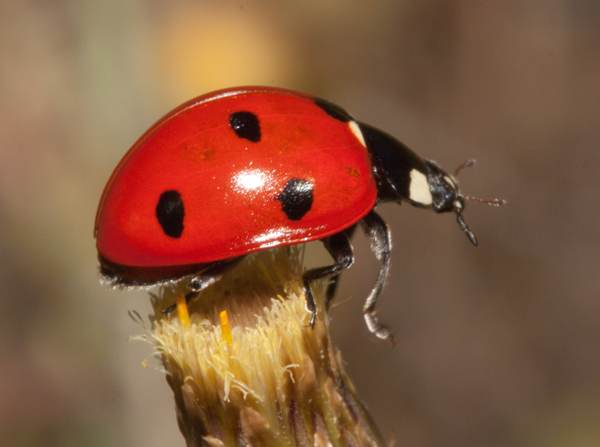
The Seven-spot Ladybird is the most common ladybird species in Britain and Europe; and, because it is both conspicuous and distinctive, finding and identifying this species is not difficult.
Description
At 6-8 mm in length, this is the largest ladybird native to Britain and Ireland. Key identification features of the adults are the seven black spots of the bright red elytra (wing cases), and white marks on either side of the front of the thorax.
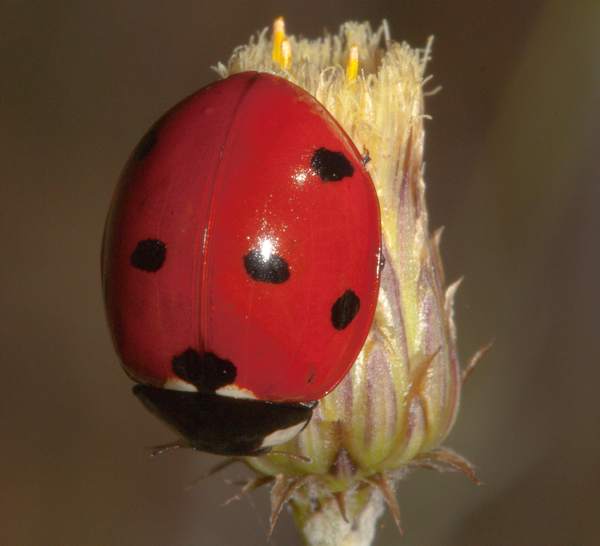
Habitat
Hedgerows, meadows, scrubland and gardens all offer suitable habitat for this omnivorous little beetle, which is particularly popular with gardeners because its favourite food is aphids (or greenfly, as gardeners generally call these plant-eating little bugs), although these colourful beetles do also eat pollen and nectar.
Distribution
The Seven-spot Ladybird is widely distributed in Britain and Ireland. This species also occurs throughout mainland Europe, parts of Africa the Middle East, much of Asia and the Indian subcontinent. In the USA this ladybird is an introduced species.
Lifecycle
Seven-spot Ladybirds lay their bright-yellow eggs in batches of between ten and 50 on the undersides of the leaves of aphid-infected plants. The larvae emerge from the eggs after a week or thereabouts, and immediately they begin feeding on aphids. The larval stage lasts about three weeks, during which time a larve can munch its way through as many as 500 aphids before pupating for a further week. When the adult emerges from the pupal case it continues its feeding frenzy: it is reported that an adult Seven-spot Ladybird can consume 5000 aphids during the summer months. Adults overwinter in leaf litter, under rocks, or tucked beneath loose bark on dead or dying trees.
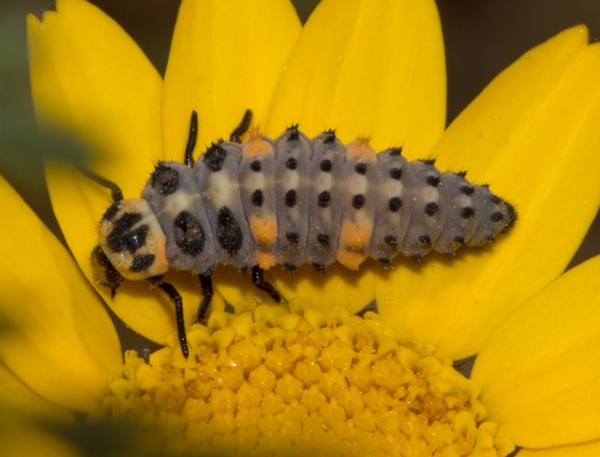
Above: Larva of a Seven-spot Ladybird.
One of the most serious threats to these ladybirds at the larval stage is another Seven-spot Ladybird larva: cannibalism is far from uncommon, especially if aphids are in short supply.
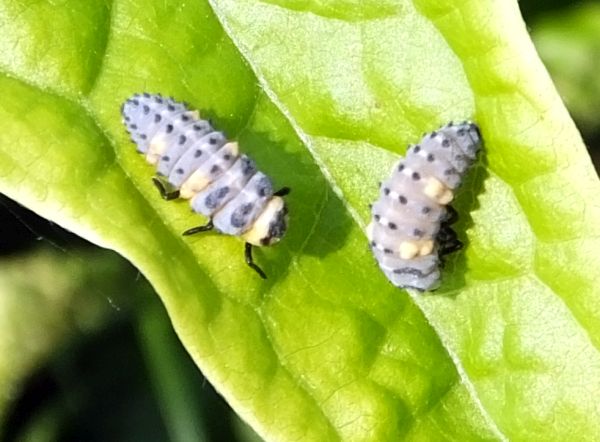
Above: ladybird larvae go through several instars (moults) as they grow. These young larvae of Coccinella septempunctata are paler than they will be when they reach maturity.
Although Harlequin Ladybirds are notorious predators on the larvae of other ladybird species, even Seven-spot Ladybirds can turn canibal when food (aphids!) is in very short supply.
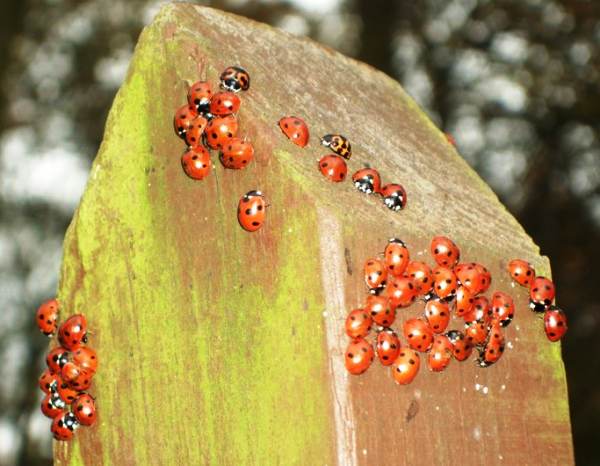
Above: A colony of Seven-spot Ladybirds plus two Harlequin Ladybirds Harmonia axyridis, an alien species originating in Asia.
Acknowledgements
This page includes pictures kindly contributed by Tom Pearman and Rob Petley-Jones.
References
O'Reilly, Pat. (1997; 8th reprint 2010) Matching the Hatch. Shrewsbury: Quiller Publishing.
Foster G. N. & Friday L. E. (1988) Key to adults of the water beetles of Britain and Ireland (Part 1). Taunton: Field Studies Council.
Harde K.W. & Severa F. (1984) Field Guide in Colour to Beetles. Littlehampton Book Services.
Excited by rivers and streams? So are we, and we're pretty sure you would find the Winding River Mystery trilogy of action-packed thrillers gripping reading too. Dead Drift, Dead Cert, and Dead End are Pat O'Reilly's latest river-based novels, and now they are available in ebook format. Full details on our website here...
Buy each volume in ebook format for only £2.47 on Amazon... Paperbacks also available on Amazon at £6.95 each. All proceeds go towards keeping the First Nature website online.
Please Help Us: If you have found this information interesting and useful, please consider helping to keep First Nature online by making a small donation towards the web hosting and internet costs.
Any donations over and above the essential running costs will help support the conservation work of Plantlife, the Rivers Trust and charitable botanic gardens - as do author royalties and publisher proceeds from books by Pat and Sue.